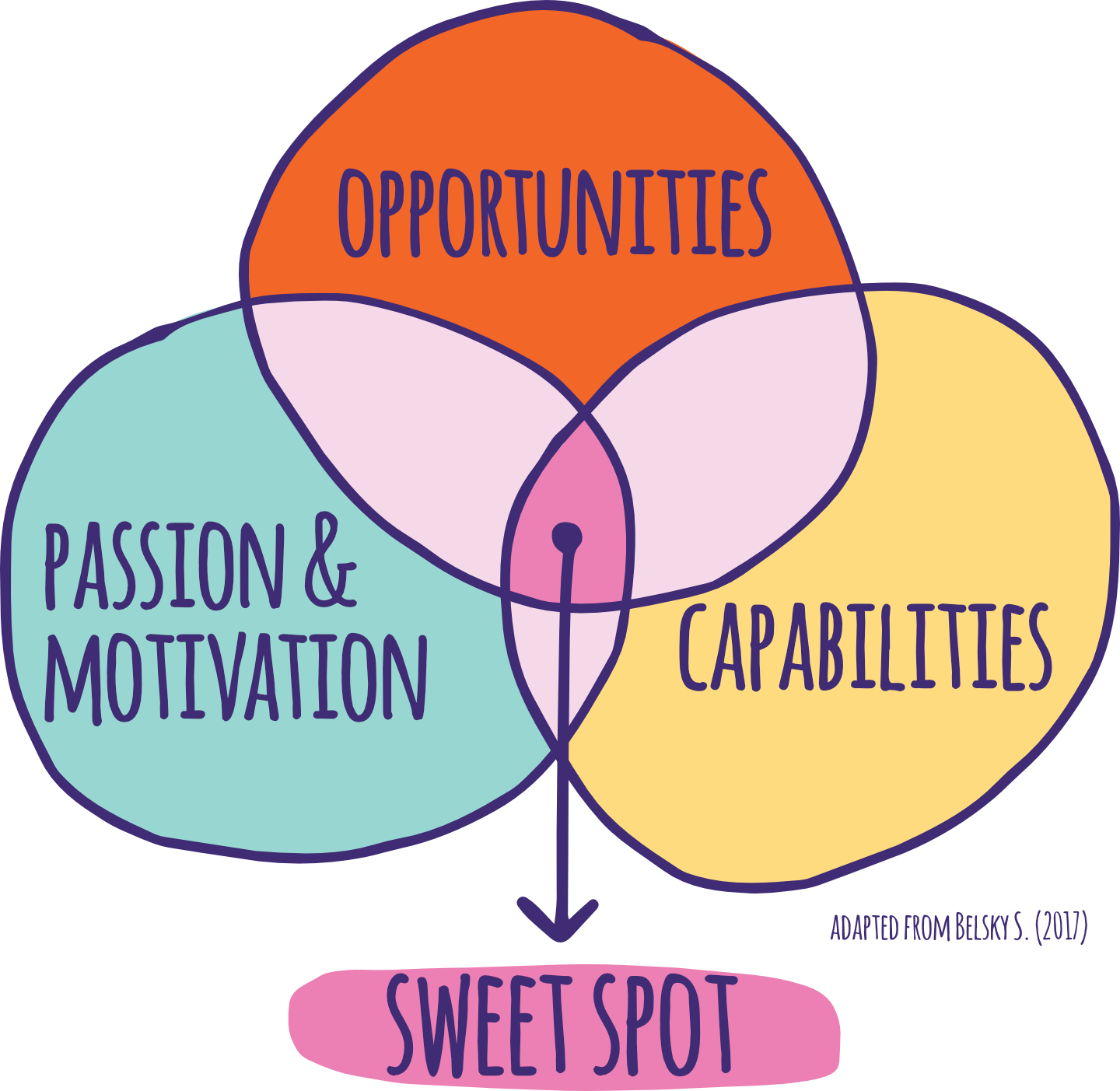Active Steps to Breakthrough /
Self-Driven Development
Where to start? This series of posts is dedicated to supporting you in shaping your personal path inside your team and your organization. You will find short summarized development aspects from an individual to an organizational perspective, combined with practical examples. Additionally, we will provide with every chapter one tool and some reflective questions you can use for yourself and your team as a kick-start.
For more support, questions and exchanges on which conditions are needed to enable a true breakthrough for you and your team, take the chance and get in touch with us.
Self-Driven Development
& The Sweet Spot Model
Companies supporting Self-Driven Development
Nowadays we constantly talk about change, but what exactly does “the change” mean?
First, change must start from within: only an inner and individual transformation allows an outer, and eventually a collective, one.
Moreover, this simple, yet extremely complex principle is fully realised when individual development is self-driven and people feel responsible for their own path. Deciding to change for oneself, consciously, within a personal context of growth and development.
But what does change look and structure like at work?
There are many examples of companies that have embodied and contributed to the development of this principle.
Below we present three of them, and then provide our perspective, as atrain, on the topic.
Career Coaching
At Mutual of Omaha, an on-site career coach provides 1-on-1 coaching service to employees, at no cost. The coach helps employees to define their career goals and to navigate their unique path to get there.
Coaching services include resume development, interview preparation and a personal career assessment, as well as networking opportunities and connection to other internal resources.
The best part? The idea for career coaching came from one of Mutual’s own employees, a woman named Candi, showcasing the company’s true commitment to personal development.
Scholarships and learning benefits
Sometimes helping your employees grow means looking beyond your own business. Panda Restaurant Group does have its own personal development program called the University of Panda, which offers leadership training and career path support. But the company also offers financial aid to employees seeking higher education opportunities.
Under Panda’s scholarship program, 300 employees are granted scholarships for tuition at any accredited two- or four-year undergraduate program.
Recipients receive up to 80% of their tuition, to a maximum of $2,500 per year, and the scholarship can be renewed for an additional three years. The program’s aim is to help employees become high-performing and inspirational leaders.
Freedom to explore Career Paths
HP aims to create technology that makes life better for everyone, everywhere. Through engineering experiences that amaze, HP has a legacy of pushing the boundaries of technology to deliver life-enriching, world-changing innovations at every turn. The company believes that the ultimate driver of its success has been and will always be the power of its people—HP considers its diverse, inclusive global community of employees to be one of its greatest strengths and what truly differentiates it in the marketplace.
HP management is all about allowing employees to grow and learn at their own rate. They encourage each person to seek out and take advantage of any opportunities that interest them in order to gauge what their ultimate goals are for the future. In this way, managers help guide career paths that are right for each individual employee.
Self-Driven Development at atrain
As a company we employ all three of these initiatives, making sure atrainers are supported and offered the opportunities to realize their full potential.
atrain employees can reach out to professionally trained coaches among their colleagues, are trained in peer coaching and are encouraged to practice it regularly. They are also offered a development budget that they can freely use to further their development in the direction they feel fits better with their purposes. Moreover, all the employees are supported in their career and development planning by an agile coach.
[Read: “Resource Person”: A Steward on our Journey towards Wholeness]
Through these discussions, atrainers can explore horizontal movements through the organizations, living the “career lattice” to the fullest.
Since at atrain we are convinced that leadership requires a systemic understanding, employees are encouraged to take different roles, wear different hats and enrich their experience. However, this process is driven and decided primarily by the employees themselves.
The Sweet Spot Model
As mentioned in the beginning, change comes from the inside and needs to be driven by the people involved in it. To be able to do that, it is crucial for employees to enhance their self-awareness of what motivates them, what are their capabilities and what can they do to play on those.
A powerful tool, derived from the work of Scott Belsky (2017), is the Sweet Spot Model.
This model fosters a reflection process and stimulates awareness on own capabilities, motivation and opportunities at hand. By creating clarity on these elements, workers can understand where their “work sweet spot” lies. Where their capabilities meet what motivates them and which opportunities are in that space to take.
Of course, to reach their sweet spot, people have to confront some blockers. There are two macro-categories of blockers: internal (fears) and external (organizational constraints).

Use the following guiding questions to kick-start your reflections
With this model in mind, try to reply to these reflective questions.
Your answers will be the first steps towards defining your personal sweet spot and starting to create your conditions to breakthrough.
- Think about the last feedback you received: what strengths stand out? Which areas of development?
- Think about the times you were at work in the past months: when did you feel motivated and energetic? What tasks/responsibilities were you attending to?
- Think big and small: what opportunities do you see to apply your strengths in areas that motivate you? When could you work on your areas of development? Who could support you? (anything can be an opportunity: from vacancies to coffee chats).
(Written with the support and contribution of Ilaria Papola)
Keep in touch
Would you like to exchange your reflections and take further steps?





